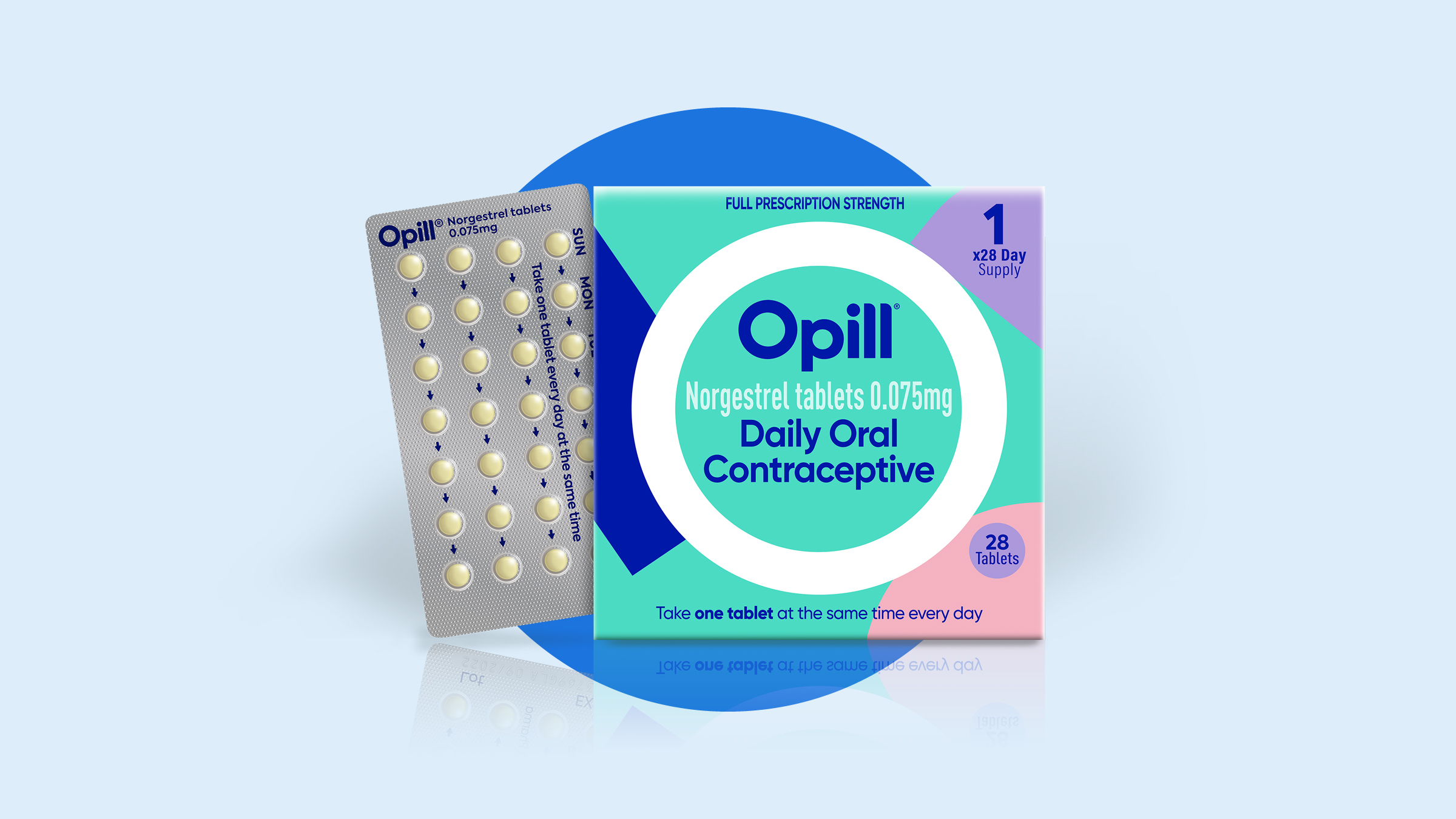Post-Roe America: How OTC Birth Control Changes The Landscape

Table of Contents
Increased Access and Reduced Barriers to Contraception
The most immediate impact of OTC birth control would be increased access and a reduction in barriers that currently prevent many women from utilizing contraception effectively. This improvement manifests in several key areas:
Geographic Barriers
Many women in rural areas or low-income communities face significant barriers to accessing reproductive healthcare, including birth control. These barriers often include long distances to healthcare facilities, lack of transportation, and inflexible clinic hours. OTC access eliminates many of these travel and appointment scheduling hurdles.
- Reduced transportation costs: Eliminates the expense of gas, public transportation, or ride-sharing services.
- Increased convenience: Allows women to obtain birth control at their convenience, from local pharmacies or even online retailers.
- Easier access for those with limited mobility: Provides a critical solution for women with disabilities or limited mobility who struggle to reach healthcare clinics.
The impact on underserved populations is potentially transformative. Improved access to OTC birth control could lead to significantly better reproductive health outcomes in these communities, reducing rates of unintended pregnancies and associated health complications.
Financial Barriers
The cost of prescription birth control can be prohibitive for many women, even with insurance. Co-pays, deductibles, and the cost of doctor visits can create significant financial obstacles. OTC options could significantly reduce this financial burden.
- Lower out-of-pocket expenses: OTC birth control would likely be cheaper than prescription options, making it accessible to a broader range of individuals.
- Improved affordability: This increased affordability would be particularly beneficial for low-income individuals and those without health insurance.
- Potential for increased insurance coverage of OTC options: Insurance companies might also cover a portion of the cost of OTC birth control, further improving affordability.
Analyzing the potential cost savings is crucial. The reduction in unintended pregnancies resulting from increased access to OTC birth control could actually lead to substantial long-term savings in healthcare costs.
Time Barriers
Scheduling appointments with doctors can be difficult, especially for busy women juggling work, family, and other responsibilities. The time commitment involved in obtaining a prescription for birth control can be a significant deterrent. OTC options remove this time constraint.
- Immediate access: Women can obtain birth control immediately without scheduling appointments or waiting for prescriptions.
- Improved convenience: This allows for greater spontaneity in family planning and removes a significant logistical hurdle.
- Increased spontaneity in family planning: This increased convenience could improve the effectiveness of birth control usage.
The implications for work-life balance and personal autonomy are significant. Easier access to birth control empowers women to take control of their reproductive health without sacrificing other aspects of their lives.
Potential Impact on Public Health Outcomes
The widespread availability of OTC birth control is expected to have a considerable positive impact on several key public health indicators:
Reduced Unintended Pregnancies
Wider access to birth control, particularly OTC options, is expected to lead to a significant decrease in unintended pregnancies. This, in turn, could reduce the number of abortions, even in areas where abortion access is severely restricted.
- Fewer abortions: Increased access to effective contraception reduces the need for abortion services.
- Decreased need for crisis pregnancy resources: Lower rates of unintended pregnancies would lessen the demand for crisis pregnancy centers and related support services.
- Reduction in maternal mortality rates linked to unintended pregnancies: Unintended pregnancies often lead to delayed or inadequate prenatal care, increasing risks to maternal health.
The potential for a substantial reduction in the overall healthcare burden associated with unintended pregnancies is immense. This could lead to considerable cost savings for the healthcare system as a whole.
Improved Sexual Health Education
The availability of OTC birth control may encourage more open and honest conversations about sexual health and family planning. This increased accessibility could naturally lead to a greater understanding and adoption of safe sex practices.
- Increased access to information: The increased visibility of birth control in pharmacies could prompt questions and discussions about reproductive health.
- Reduced stigma around birth control: Making birth control readily available helps normalize its use and reduces the shame or stigma often associated with it.
- Improved understanding of reproductive health: Increased access and discussion could empower individuals to make informed decisions about their sexual and reproductive health.
An informed and empowered population is better equipped to prevent unintended pregnancies and make responsible choices regarding their reproductive health.
Potential Challenges and Concerns
While the potential benefits of OTC birth control are significant, it's crucial to address potential challenges and concerns:
Misinformation and Lack of Education
Increased access necessitates robust public health campaigns to educate individuals about responsible birth control use, potential side effects, and appropriate usage instructions. This is paramount to ensuring safe and effective use.
- Importance of accurate information: Clear, accurate information is essential to dispel myths and misconceptions surrounding various birth control methods.
- Need for public health initiatives: Public health agencies must launch targeted campaigns to educate the public about OTC birth control options.
- Addressing potential concerns and misconceptions: Openly addressing concerns and misconceptions will build trust and encourage responsible use.
The role of healthcare providers and public health organizations in providing comprehensive education is vital. Clear, easily accessible information in various formats is crucial.
Regulatory Oversight and Safety
Ensuring the safe and effective use of OTC birth control requires careful regulatory oversight and monitoring to maintain high safety standards.
- Importance of FDA regulations: Stringent FDA regulations and approvals are vital to ensuring the quality and safety of OTC birth control products.
- Monitoring adverse events: A robust system for monitoring and responding to adverse events is essential to safeguard public health.
- Ensuring product quality and safety: Regular inspections and quality control measures are needed to maintain the safety and efficacy of OTC birth control products.
Government agencies have a critical role in regulating OTC birth control and safeguarding public health. This includes establishing clear guidelines and standards for product safety and efficacy.
Conclusion
The potential shift to readily available OTC birth control in post-Roe America presents a complex landscape of opportunities and challenges. While offering increased access, affordability, and convenience, it also necessitates enhanced public health education and robust regulatory oversight. Successfully navigating this transition requires a concerted effort to ensure that all individuals have the information and resources needed to make informed decisions about their reproductive health. The future of reproductive healthcare hinges on thoughtful policymaking and effective public health initiatives related to OTC birth control and access to comprehensive sexual and reproductive healthcare services. The conversation about expanding access to over-the-counter birth control should continue, focusing on responsible implementation and widespread education to ensure its benefits are realized safely and effectively.

Featured Posts
-
 Uk Student Visas New Restrictions For Pakistani Nationals And Others
May 10, 2025
Uk Student Visas New Restrictions For Pakistani Nationals And Others
May 10, 2025 -
 Home Office Intensifies Asylum Restrictions Focus On Three Nations
May 10, 2025
Home Office Intensifies Asylum Restrictions Focus On Three Nations
May 10, 2025 -
 1509 R4 5
May 10, 2025
1509 R4 5
May 10, 2025 -
 Nyt Strands Game 366 Hints And Solutions For Tuesday March 4
May 10, 2025
Nyt Strands Game 366 Hints And Solutions For Tuesday March 4
May 10, 2025 -
 Palantir Technologies Pltr Stock Buy Sell Or Hold
May 10, 2025
Palantir Technologies Pltr Stock Buy Sell Or Hold
May 10, 2025
